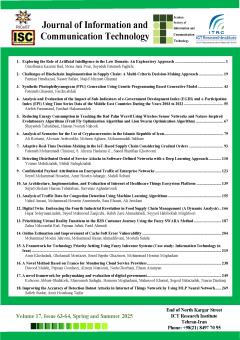Digital Twin: Embracing the Fourth Industrial Revolution in Food Supply Chain Management (A Dynamic Analysis)
Subject Areas : ICT
Hajar Soleymanizadeh
1
![]() ,
Seyed mahmoud Zanjirchi
2
,
Habib Zare Ahmadabadi
3
,
Seyed mahmoud Zanjirchi
2
,
Habib Zare Ahmadabadi
3
![]() ,
Seyyed Habibollah Mirghfoori
4
,
Seyyed Habibollah Mirghfoori
4
![]()
1 - PhD student in industrial management (production and operations), Faculty of Economics, Management and Accounting, Yazd University, Yazd, Iran
2 -
3 - University of Yazd
4 - Yazd university
Keywords: Supply Chain, Fourth Industry, Digital Twin, System Dynamics, Food Industry, Technology Deployment.,
Abstract :
Today, the food supply chain is facing various challenges, including long supply chains, complexity, uncertainty, and food waste. With the advent of advanced technologies such as digital twins, these challenges can be addressed. The aim of this study is to investigate the causal relationships between the influencing factors and the results of implementing digital twins in the food supply chain using system dynamics. A descriptive-causal approach with an application-oriented goal was employed, involving a field study among food industry experts, managers, and specialists. Data was collected from various sources such as interviews, reports, documents, and databases. System dynamics was used to analyze the causal relationships between the implementation and application of digital twins in the food supply chain. Three scenarios were considered to provide solutions for the best possible use of digital twin technology in the food industry. The findings showed that an increase in the cost of upgrading internet speed and technology infrastructure, as well as an increase in the training rate of employees, are factors that influence the creation of digital twins. However, the quality of using digital twins in the early years is not optimal due to the lack of skills and knowledge of employees and their resistance to accepting this technology. By training employees and using experts in the field of digital twin technology, employee resistance can be reduced and their understanding of the benefits of using this technology can be increased. In addition, the results showed that the implementation of digital twins can improve product quality, increase consumer willingness to purchase, and reduce the total cost of the product in the long term.
